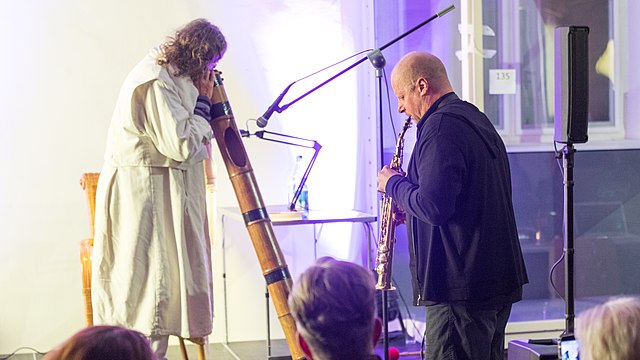Mary Hildegard Ruth Bauermeister was a German artist who worked in sculpture, drawing, installation, performance, and music. Influenced by Fluxus artists and Nouveau Réalisme, her work addresses esoteric issues of how information is transferable through society. "I only followed an inner drive to express what was not yet there, in reality or thought", she said of her practice. "To make art was more a finding, searching process than a knowing." Beginning in the 1970s, her work concentrated on the themes surrounding New Age spirituality, specifically geomancy, the divine interpretation of lines on the ground.
Portrait by Oliver Mark, 2014
Bauermeister in 2012
Bauermeister in 2019
Bauermeister and her son Simon Stockhausen in 2019
Fluxus was an international, interdisciplinary community of artists, composers, designers and poets during the 1960s and 1970s who engaged in experimental art performances which emphasized the artistic process over the finished product. Fluxus is known for experimental contributions to different artistic media and disciplines and for generating new art forms. These art forms include intermedia, a term coined by Fluxus artist Dick Higgins; conceptual art, first developed by Henry Flynt, an artist contentiously associated with Fluxus; and video art, first pioneered by Nam June Paik and Wolf Vostell. Dutch gallerist and art critic Harry Ruhé describes Fluxus as "the most radical and experimental art movement of the sixties".
Fluxus Manifesto, 1963, by George Maciunas
Flux Year Box 2, c. 1967, a Flux box edited and produced by George Maciunas, containing works by many early Fluxus artists
Piano Activities, by Philip Corner, as performed in Wiesbaden, 1962, by (l–r) Emmett Williams, Wolf Vostell, Nam June Paik, Dick Higgins, Benjamin Patterson and George Maciunas
Willem de Ridder's Mail Order FluxShop, Amsterdam, with Dorothea Meijer, winter 1964–65








